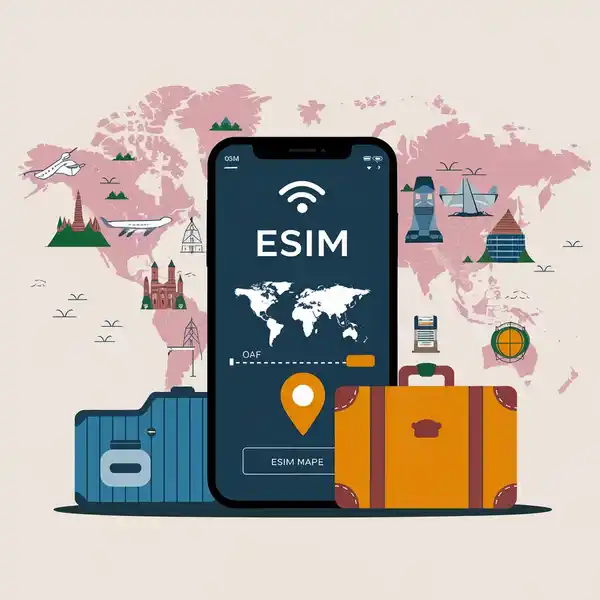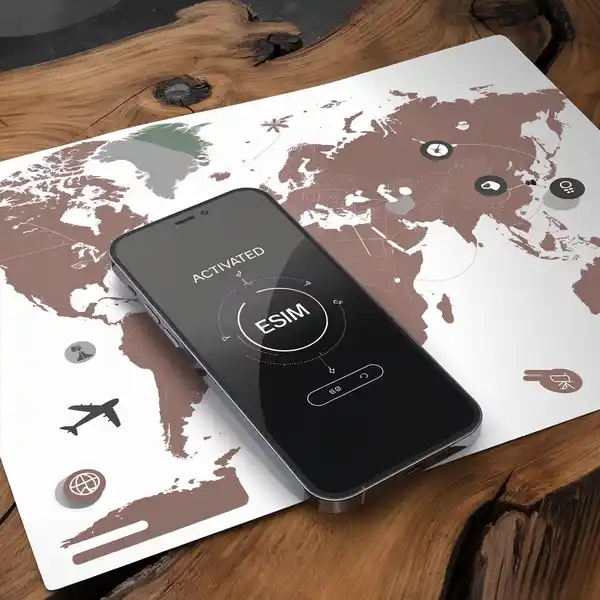The Evolution of Travel Connectivity: From SIM Cards to eSIMs in USA
In today’s hyper-connected world, staying online during international travel has become more than a convenience; it’s a necessity. From sharing picturesque moments on social media to navigating unfamiliar streets, seamless connectivity is indispensable. The journey of travel connectivity has come a long way, evolving from traditional SIM cards to the advanced eSIM technology we have today. This article explores the evolution of travel connectivity, highlighting how eSIMs are revolutionizing the way we stay connected.
The Rise of Traditional SIM Cards

For decades, Subscriber Identity Module (SIM) cards have been the cornerstone of mobile connectivity. First introduced in 1991, SIM cards allowed users to authenticate their identity and access cellular networks. Travelers often relied on roaming services offered by their domestic carriers, which, despite being convenient, came with exorbitant costs.
To counter these high fees, many travelers adopted the practice of purchasing local SIM cards at their destinations. This method was cost-effective but often inconvenient. Finding a store, dealing with language barriers, and frequently swapping cards presented significant challenges.
The Emergence of Global SIM Cards
In response to the limitations of local SIM cards, global SIM cards entered the scene. These cards offered coverage across multiple countries, providing a single solution for frequent travelers. While an improvement, they still required users to carry a physical card and often came with hidden fees or limited data packages.
The Advent of eSIM Technology

The introduction of eSIM (embedded SIM) technology marked a significant leap forward. Unlike traditional SIM cards, eSIMs are embedded directly into a device, eliminating the need for physical cards. The eSIM allows users to download a carrier profile digitally and switch between networks seamlessly.
Advantages of eSIMs:
- Convenience: Travelers can activate a local plan before landing at their destination, avoiding the hassle of finding a SIM card store.
- Flexibility: Switching between carriers is as simple as downloading a new profile, making it ideal for frequent travelers.
- Cost-Effective: With access to competitive local plans, travelers can avoid exorbitant roaming fees.
- Eco-Friendly: By eliminating physical cards, eSIMs reduce plastic waste and contribute to sustainability.
eSIM Adoption in the Travel Industry
The adoption of eSIM technology has been rapid, particularly among tech-savvy travelers. Devices like the latest iPhones, Google Pixel, and Samsung Galaxy models now come eSIM-enabled, reflecting the growing demand for this technology.
Case Study: Data on eSIM Adoption
According to a 2023 report by GSMA Intelligence:
- The global eSIM market is projected to grow at a CAGR of 15% between 2023 and 2030.
- Over 60% of international travelers in the USA used eSIMs for connectivity in 2023.
- By 2025, it’s estimated that 90% of new smartphones will support eSIM technology.
These numbers highlight a clear shift towards eSIM adoption, driven by its unparalleled benefits.

Challenges and Considerations
Despite its advantages, eSIM technology isn’t without challenges. Compatibility remains a key issue, as not all devices support eSIMs. Additionally, travelers need to be cautious about choosing reliable eSIM providers to avoid potential security risks or poor network coverage.
How to Get Started with eSIMs
- Check Compatibility: Ensure your device supports eSIM technology. Most newer smartphones are eSIM-enabled.
- Choose an eSIM Provider: Research providers that offer plans for your travel destination. Popular options include Airalo, GigSky, and Truphone.
- Download the eSIM Profile: Use the QR code or app provided by the carrier to activate the plan.
- Switch Networks Seamlessly: Enjoy the flexibility of switching carriers without physical SIM cards.
The Future of Travel Connectivity
As eSIM technology continues to evolve, its integration with other innovations like 5G promises even faster and more reliable connections. The advent of smartwatches, IoT devices, and connected cars further underscores the importance of eSIMs in the travel ecosystem.
Conclusion
The evolution from SIM cards to eSIMs represents a transformative shift in travel connectivity. By eliminating the limitations of physical cards, eSIMs offer travelers unprecedented convenience, cost savings, and flexibility. As the world embraces this technology, staying connected while exploring new destinations has never been easier.
For travelers looking to make the most of their journeys, embracing eSIM technology is no longer an option but a necessity. Whether you’re a globetrotter or an occasional traveler, eSIMs are here to simplify your adventures.




